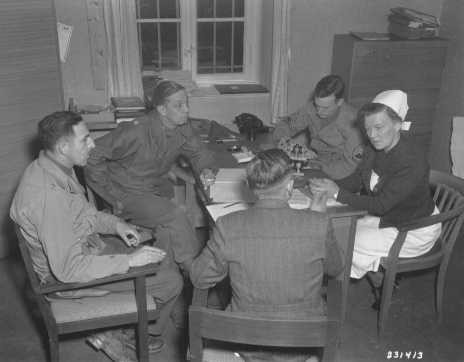
Deadly Medicine: Irmgard Huber
When American forces occupied the small German town of Hadamar, they heard rumors about the murder of the mentally ill at a local psychiatric hospital. Hadamar had been one of six major “euthanasia” facilities in Nazi Germany that claimed the lives of some 250,000 Germans. These were crimes committed by German citizens against their fellow citizens within the borders of their own country. As such, the murders at Hadamar were not classified as war crimes and therefore offered no legal basis for trial by American forces. However, hospital records revealed that 476 forced laborers from Poland and the Soviet Union—Allied countries—had also perished at Hadamar, and these crimes did fall under international jurisdiction.
Irmgard Huber, head nurse of the hospital, was among the staff arrested by the Americans. Her claims that she never killed patients were corroborated by co-workers and witnesses and she was released. Later, the court ruled that Huber had indeed played a role in selecting patients for murder and in falsifying death certificates. She also controlled the supply of drugs used to overdose patients. Huber was rearrested, tried with six others, and received 25 years in prison for serving as an accomplice to murder.
Huber was also among the 25 persons tried at a later German-convened Hadamar trial in 1947, which was able to try German nationals who had participated in the murder of thousands of their fellow citizens. As accomplice to murder in at least 120 cases, Huber was sentenced to eight additional years in prison.
In the early 1950s, however, American authorities bowed to Cold War political pressure and issued amnesties and clemencies for many convicted Nazi perpetrators. Despite her proven role in numerous murders, Irmgard Huber was released from prison in 1952.
Critical Thinking Questions
- What is the appropriate relationship between a government and the medical profession?
- What is the appropriate relationship between ideology and the medical profession?
- What pressures and motivations may have influenced Huber’s choices?


